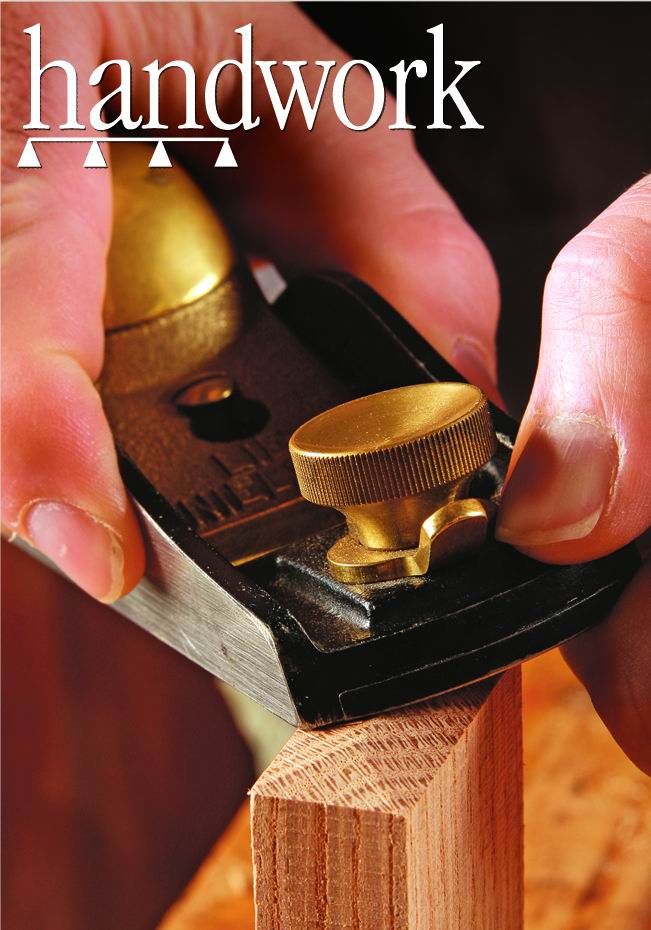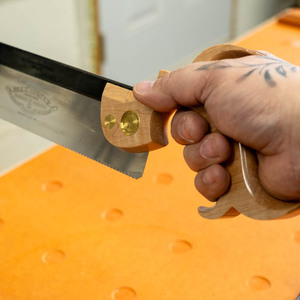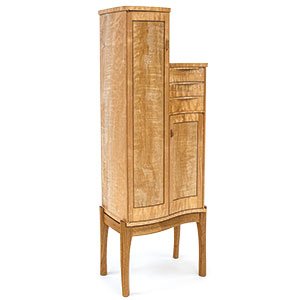Jonesing for a hand tool fix? We’ve got you covered.

If you subsribe to Fine Woodworking, then you already know that we’ve introduced a new section called Handwork that’s devoted to hand-tool use. We’ve always recognized the importance of hand tools–you really can’t do fine work without them–but we wanted to have a place in the magazine to cover topics that might not make it in otherwise. In the magazine, our emphasis will be practical. We want to help you learn how hand tools fit into the modern shop. However, we’ve also started a blog, called Handwork too, where the range of topics covered is much wider. I’ve already got some great ones planned: interviews with tool makers (big and small) and noted users, tips, tricks, and jigs. I’m even on the look out for drop dead gorgeous tools, just so that we have something pretty to admire from time to time. I’m also interested in what you think about hand tools, so if you have ideas about what I should cover here in the blog, or in the magazine, just email me. And let me know if you’d like to write a blog for us.
If you don’t get the magazine (is there really such a person?!) you can read my letter announcing Handwork below.
| Hand tools in the spotlight I understand why power tools are popular. They’re efficient and accurate. But sometimes a hand tool is the smarter choice. Nothing preps a surface for finishing like a smoothing plane and no joint is as beautiful as a hand-cut dovetail. Simply put, to do your best work, hand tools should have a place in your shop. I was lucky. I was exposed to hand tools early on. I learned how to sharpen them properly, and therefore I was able to use them to full effect. And my learning curve was shorter because companies like Lie-Nielsen were turning out top-notch tools that work right out of the box. That’s probably why a lot of you have caught the hand-tool bug too. I’m happy to announce that starting in this issue you’ll find Handwork, a new section of Fine Woodworking devoted to hand-tool use. Don’t worry, we’ll still cover hand tools elsewhere in the magazine, but Handwork gives us a chance to cover techniques and tools that might not make it in otherwise. In keeping with our overall take on woodworking, we’ll keep Handwork practical. We’ll focus on helping you make better furniture by showing you the hand tools and techniques that make sense in a modern shop. And there is quite a bit to cover, even if we pass by pit saws, adzes, and other favorites of collectors and historical re-enactors. Make sure to look for my new blog, also called Handwork (FineWoodworking .com/extras), where I’ll bring you an even broader approach—looking at new tools, interviewing hand-tool users and makers, providing quick tips, and answering questions. In this issue (p. 22), Michael Pekovich calls upon his years of experience making furniture to put together an overview of the 12 hand tools he considers necessary for fine woodworking. In future issues, Alf Sharp will use a pair of molding planes to make custom moldings, and Garrett Hack will turn an ordinary bench chisel into an indispensable skew chisel. And that’s just some of what we have in store! |


















Comments
Great news, Matt. Looking forward to it, as well as the article on those grooving planes you made!
I am hobby woodworker, and obviously my hand tool skills are not so great. i am expecting to learn from the new magazin section as weel as from a new blog.
I hope the blog can speak to beginners like me. I have no hand tools yet and I not sure where to start. I have a few power tools and have not made anything complicated or spectacular, still getting started. As for hand tools, I'd like to know which planes are for which purposes, which one I should buy first. I'd also like to learn about sharpening.
It would be great to see wooden planes being covered. So many people rave about them, to me they are a mystery. I cannot fathon why someone would in this day and age opt deliberately for something so hard to adjust and use.
So please prove me wrong!
Chris
After 25 years of "machining wood" I have started to make the change over to handtool woodworking. It would have been nice over the years to have know which handtools I should have purchased and what features to have been looking for. I think this will be a great place to feature a specific type tool such as which handsaw, plane, or whatever and why. Then explain how to use and maintain it.
I look forward to the articles!
Log in or create an account to post a comment.
Sign up Log in